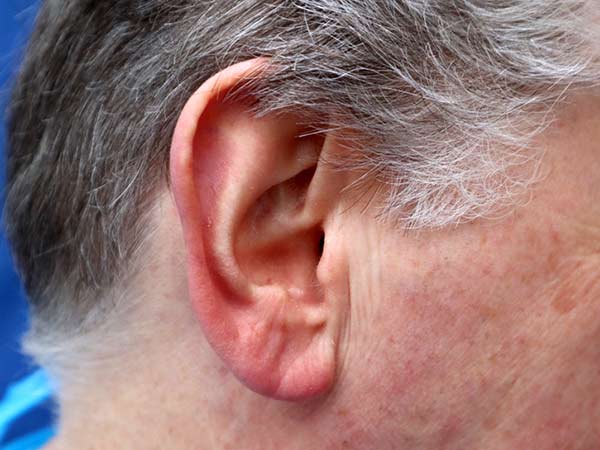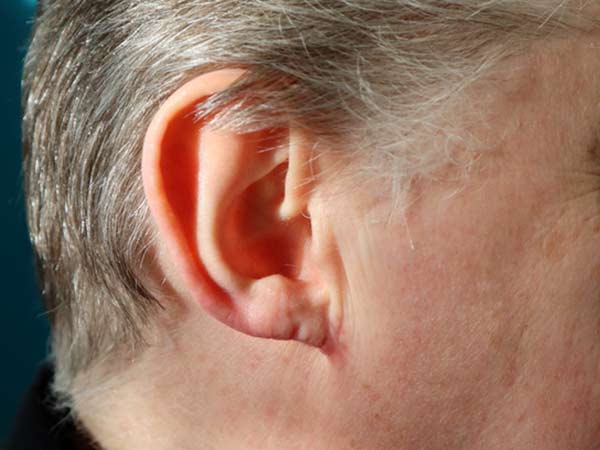Large Earlobes Earlobes That Stick Out & Lack Of Earlobe
As the earlobe ages, the taut fibrous tissue within the fat of the earlobe becomes more lax and with the continued pull of gravity, the earlobes tend to enlarge and become more floppy over time. Also, some clients do have excessively large earlobe causing them to grow their hair to over them or alter their behaviour. Sometimes, clients do not like the way their earlobes stick out. This is also correctable.
The Goal Of The Procedure
Ear lobe reduction involves preserving the curved lobular border of the earlobe but reducing the earlobe in height and length whilst causing minimal well hidden scars.
Ear lobe inversion surgery brings the earlobe into a more vertical position.
How Earlobe Reduction Works
The earlobe is reduced by removing an tailored piece of the earlobe making it shorter vertically and more elegantly streamlined.
Earlobe Inversion
This procedure involves making an upside down Y incision from the back of the earlobe. The upside down Y shape then is redesigned as a V shape allowing skin to slide upwards into the stem of the upside down Y thus shortening the earlobe. Another way the earlobe can be made to move inwards is to take the root of the earlobe and move it towards the bone behind the ear called the mastoid bone using a stitch.
Ear Lobe Reconstruction
Some clients have small or almost non-existent earlobes since birth or from an accident. To create the earlobe takes more than just skin and soft tissue. The new earlobe needs structural support and this is created by taking a wafer of cartilage from the bowl of the same ear which is well hidden and slid inside the two new flaps of skin making the earlobe like a hand into a glove.
Why Choose Mark Sheldon Lloyd?
Due to a wide variety of experience in treating all types of ear shapes and sizes, Mark is skilled in handling cartilage & skin carefully. He optimises each surgery to create the best aesthetic outcome for you. As one of the few ear reconstruction surgeons in the UK, handling cartilage is his regular day-to-day practice.
Duration Of Surgery
Earlobe reduction or earlobe inversion for both sides takes approximately an hour. Earlobe creation takes about an hour per side or two hours for both ears.
Anaesthesia Required
All the above types of earlobe surgery can be carried out by numbing the earlobe with some small injections of local anaesthetic.
Outpatient Visit
This procedure is performed as out patient in a high quality state of the art operating theatre with a trained nurse present.
Recovery / Healing time
The wounds have stitches that need removing at about a week. Clients can shower as normal that evening as there is a shower-proof dressing over the wound.
Potential Risks Associated With The Procedure
- Bleeding (haematoma). Occasionally, after surgery, blood may pool under the skin (haematoma), this usually disperses spontaneously over 2 to 3 weeks, but very rarely needs to be drained surgically if larger and fails to disperse.
- It is important to recognise that a surgical incision contributes to a risk of the introduction of bacteria from the patient’s own skin. Such infection may be associated with tiredness, weakness, fever and muscle aches and pains. Antibiotics are not normally given during this procedure and there is no evidence that by giving antibiotics this reduces the chance of an infection occurring. If you experience any symptoms of infection, contact your clinic nurse or the advised out of hours contact number.
- Wound healing. Healing of wounds varies from patient to patient and even from one part of the body to another and is a gradual process. Smoking for the period leading upto your surgery and afterwards can seriously hinder the healing process.
- Small cysts called milia can form along the scar line. This is normally temporary, but sometimes may need surgical removal
- Scar variability and keloids. Reformation or more accelerated re-growth of the keloid is always a possibility in this type of surgery. All prospective patients must be aware that the rate at which their scars may heal and fade are entirely variable and individual. Uncommonly, a scar does not heal in the normal way. This is known as hypertrophic scarring meaning the scar is excessively thick. Scars may be red, or highly coloured, thick, painful and may take several years to improve if at all. Although this an unusual problem, it cannot be avoided or diagnosed in advance. Asymmetry. Keloid treatment is not an exact science and healing is not a symmetrical process. There maybe a slight difference between the right and the left sides and this may be noticeable several months after the surgery when the swelling has gone down. Absolute symmetry cannot be guaranteed.



